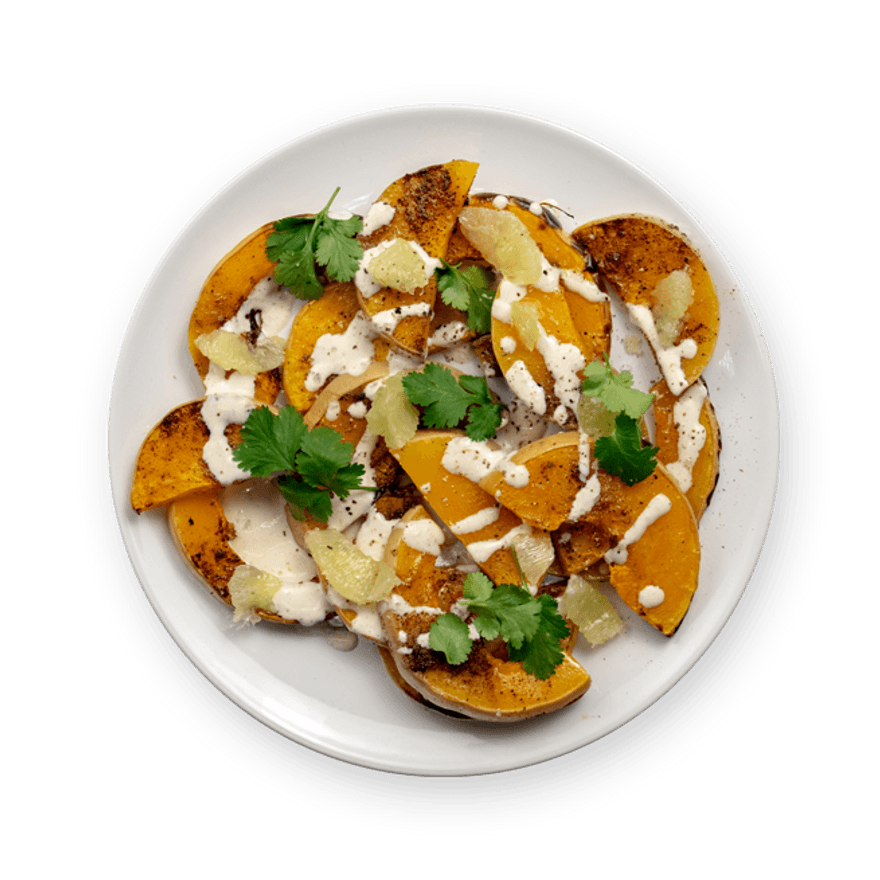Ingredients
Make sure you have...
Utensils
Oven, Parchment paper, Citrus juicer
recipe

Step 1
Preheat the oven to 210°C. Chop the butternut in half lengthways, then in 1 cm thick slices.


Step 2
Put the butternut slices on a baking tray and sprinkle on salt, pepper, all spice and a bit of olive oil.
Step 3
Bake for 20 minutes.

Step 4
Remove the lime peel, cut into segments.
Step 5
Put the slices in a bowl and sprinkle on salt, olive oil and set aside.



Step 6
Add the juice of half a lime and some salt and pepper to the yogurt and tahini. Add some water to get a smoother texture.

Step 7
Take the butternut out of the oven when cooked.





Step 8
Put the butternut slices on a plate, sprinkle on the yogurt sauce and garnish with the limes and juice.

Step 9
Optional: Add a few fresh cilantro leaves if you have any.
Personal notes
Add your own flavor!
Nutrition facts
Average estimated amount for one serving
| Energy | 353 cal. |
| Fat | 12 g |
| Carbohydrates | 59 g |
| Protein | 9 g |
| Fiber | 15 g |
Values are based on an average estimate for one serving. All nutrition information presented on Jow is intended for informational purposes only. If you have any concerns or questions about your health, please consult with a health-care professional.
On average, one serving of the recipe "Roasted butternut squash with lime" contains 353 Energy, 12 g of Fat, 59 g of Carbohydrates, 9 g of Protein, 15 g of Fiber.
Price per portion
| € | Nos recettes à -2 € par portion |
| €€ | Nos recettes entre 2 € et 4 € par portion |
| €€€ | Nos recettes à +4 € par portion |
Please note, the price above is dependent on your grocer and the available products in the grocery store you chose.
Scores


A Nutri-score
The Nutri-score is an indicator intended for understanding nutritional information. Recipes or products are classified from A to E according to their food composition to promote (fiber, proteins, fruits, vegetables, legumes, etc.) and foods to limit (energy, saturated fatty acids, sugars, salt, etc.).
A Green-score
The Green-score is an indicator representing the environmental impact of food products. The recipes or products are classified from A+ to F. It takes into account several factors on the pollution of air, water, oceans, soil, as well as the impacts on the biosphere. These impacts are studied throughout the product life cycle.
Retrieving reviews...



